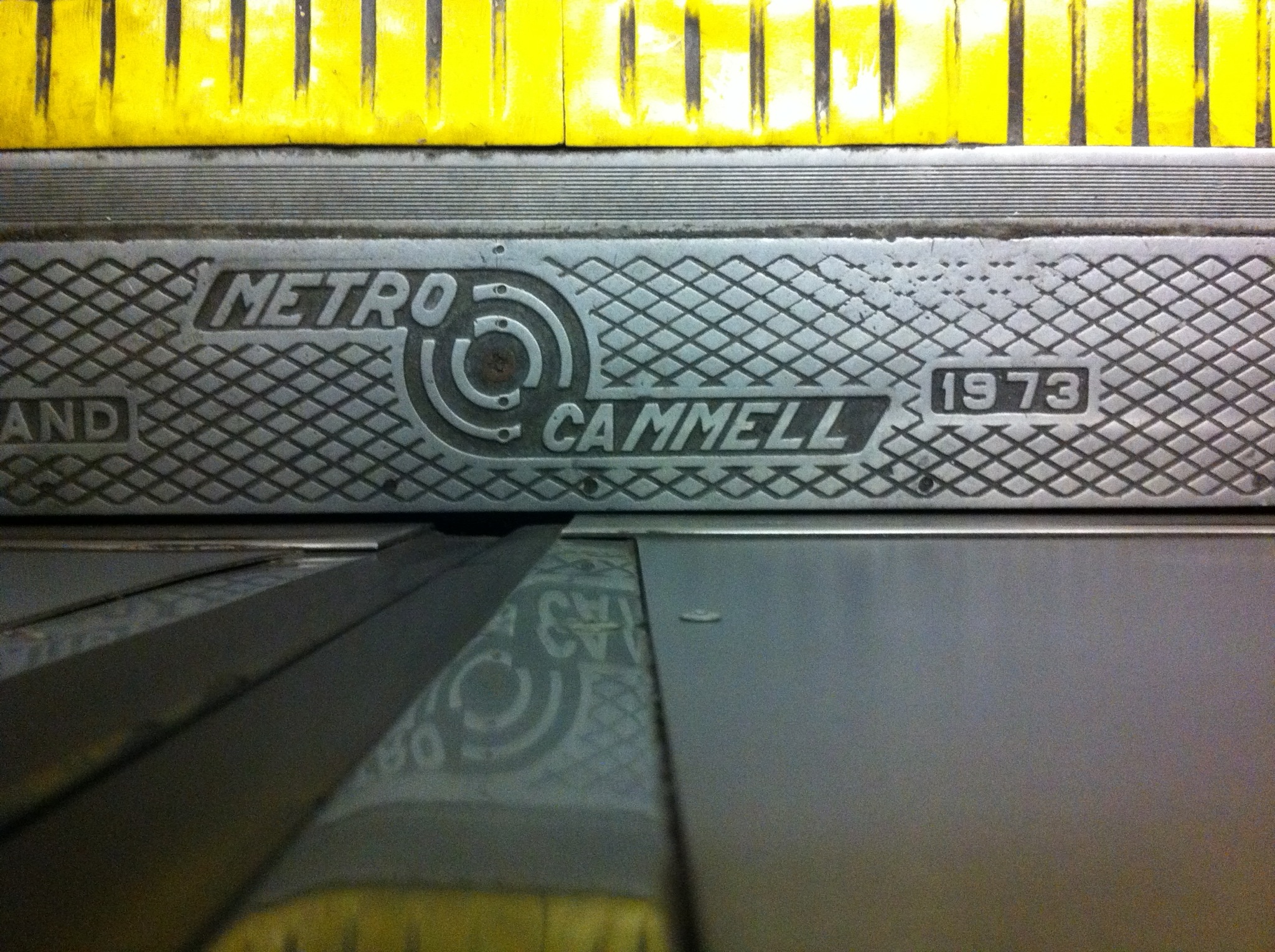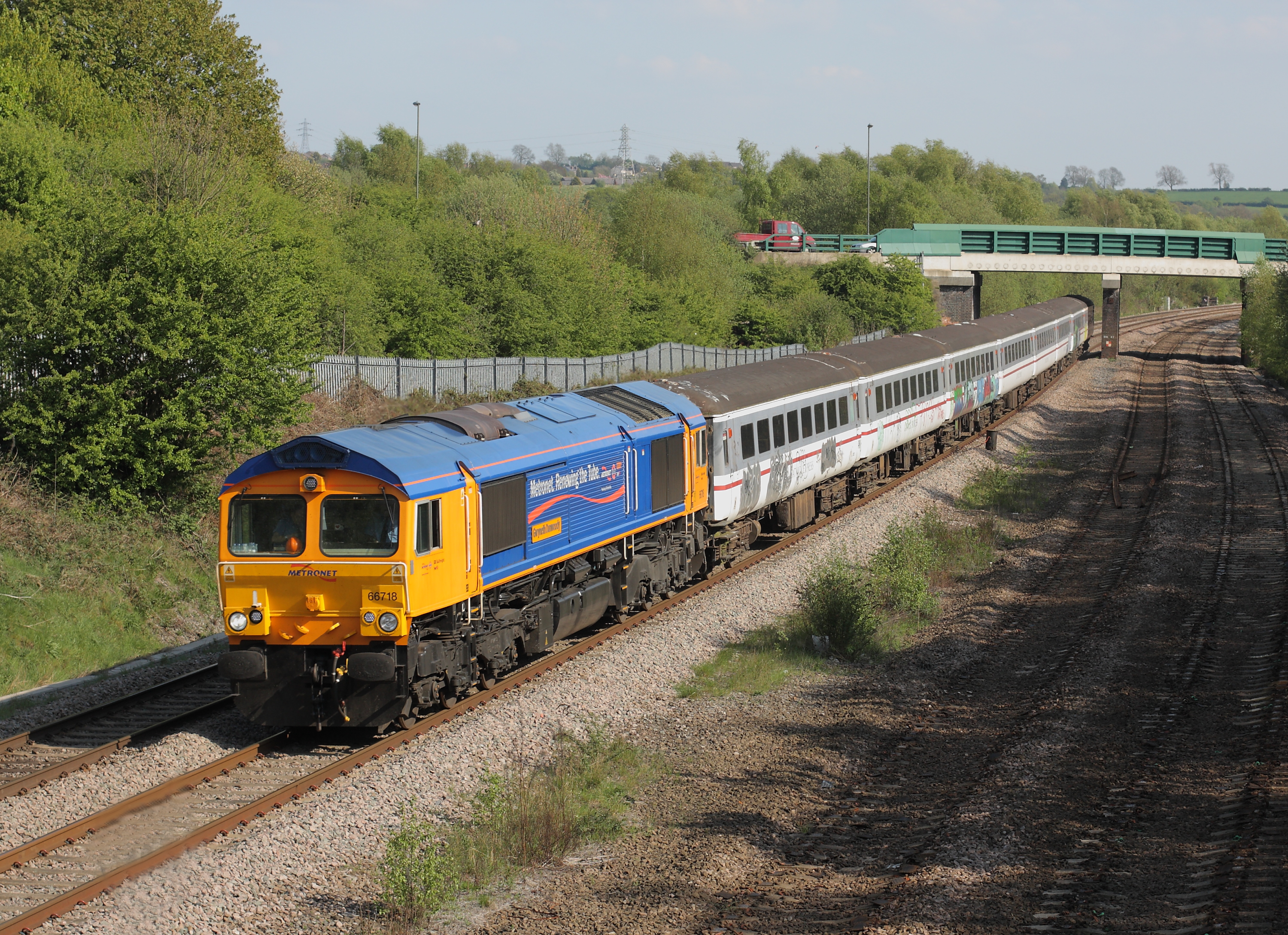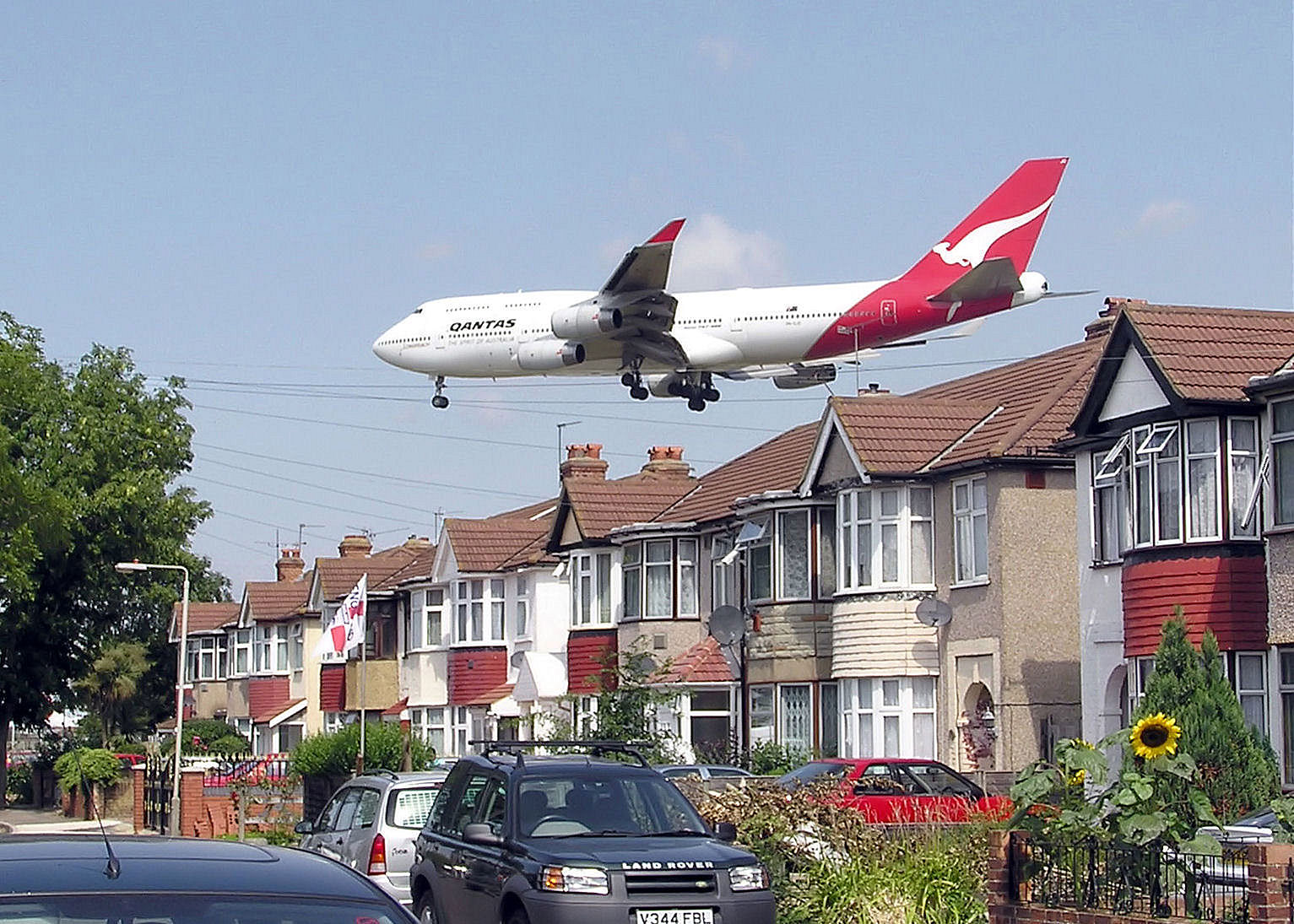|
London Underground 1972 Stock
The London Underground 1972 Stock is a type of rolling stock used on the London Underground. The 1972 Stock was originally ordered to make up the shortfall in trains on the Northern line's 1959 Tube Stock fleet, but is nowadays used on the Bakerloo line. Following the withdrawal of the British Rail Class 483 EMUs in 2021, these trains are the oldest EMUs in passenger service in Britain. A total of 63 seven-car trains were built in two separate batches. Construction A total of 252 cars were built by Metro-Cammell at Washwood Heath. In the early 1970s, the 1938 Tube stock on the Bakerloo and Northern line was life-expired and due for replacement. Tentative designs for a new Northern line fleet were abandoned when the go-ahead was given for the Piccadilly line to be extended to Heathrow Airport. That required a totally new fleet of trains to replace the 1959 stock then in use. The plan was made to transfer the 1959 trains to the Northern, to allow the worst of the 1938 stock ther ... [...More Info...] [...Related Items...] OR: [Wikipedia] [Google] [Baidu] |
Metro-Cammell
Metro-Cammell, formally the Metropolitan Cammell Carriage and Wagon Company (MCCW), was an English manufacturer of railway carriages, locomotives and railway wagons, based in Saltley, and subsequently Washwood Heath, in Birmingham. Purchased by GEC Alsthom in May 1989, the Washwood Heath factory was closed in 2005. The company designed and built trains for the railways in the United Kingdom and overseas, including the Mass Transit Railway of Hong Kong, Kowloon–Canton Railway (now East Rail line), the Channel Tunnel, and the Tyne and Wear Metro, and locomotives for Malaysia's Keretapi Tanah Melayu. Diesel and electric locomotives were manufactured for South African Railways, Nyasaland Railways, Malawi, Nigeria, Trans-Zambezi Railway and Pakistan. DMUs were supplied to Jamaica Railway Corporation and the National Railways of Mexico. The vast majority of London Underground rolling stock manufactured in mid-20th century was produced by the company. It also designed and built ... [...More Info...] [...Related Items...] OR: [Wikipedia] [Google] [Baidu] |
Associated Electrical Industries
Associated Electrical Industries (AEI) was a British holding company formed in 1928 through the merger of the British Thomson-Houston Company (BTH) and Metropolitan-Vickers electrical engineering companies. In 1967 AEI was acquired by GEC, to create the UK's largest industrial group. A scandal that followed the acquisition is said to have been instrumental in reforming accounting practices in the UK. Main subsidiaries * Metropolitan-Vickers (Metrovick) * British Thomson-Houston (BTH) * Ferguson, Pailin & Co (switchgear) * Edison Swan (lamps and radio valves) * AEI Lamp and Lighting * Siemens Brothers & Co (cables, telephone equipment and railway signaling apparatus) * Hotpoint (domestic appliances) * Premier Electric Heaters (incorporated into Hotpoint) * W.T. Henley (cables, insulators and low voltage switchgear) * Newton Victor (X-ray machines) * Sunvic Controls (heating controls) * Birlec (industrial electric furnaces) * International Refrigerator Company * Coldra ... [...More Info...] [...Related Items...] OR: [Wikipedia] [Google] [Baidu] |
CF Booth
C F Booth Ltd is a family-owned scrap metal and recycling business based in Rotherham, South Yorkshire, England. Operations Clarence Frederick Booth founded the business in 1920, as a metal purchaser and trader. Over the company's history, there have been a number of associated sites and businesses including: a rail served site in Doncaster (closed); and a site in Aston, near Rotherham, which concentrated on dismantling buses. Today the company's main site is the Clarence Metal Works, located on the residual southern section of the Sheffield and Rotherham Railway adjacent to the Rotherham Ring Road. Obtained in the 1960s, the railway embankment was removed and the ground level access allowed for easier dismantling of redundant diesel and electric locomotives. This work continues at present, although a number of the vehicles bought are now resold for preservation. Many wagons, carriages, underground and departmental stock are also processed here. C F Booth was involved in one ... [...More Info...] [...Related Items...] OR: [Wikipedia] [Google] [Baidu] |
Aldwych Tube Station
Aldwych is a List of former and unopened London Underground stations, closed station on the London Underground, located in the City of Westminster in Central London. It was opened in 1907 with the name Strand, after Strand, London, the street on which it is located, and was the terminus of the short Piccadilly line branch from Holborn tube station, Holborn that was a relic of the merger of two railway schemes. The station building is close to the Strand's junction with Surrey Street, near Aldwych. During its lifetime, the branch was the subject of a number of unrealised extension proposals that would have seen the tunnels through the station extended southwards, usually to Waterloo tube station, Waterloo. Served mostly by a shuttle train and having low passenger numbers, the station and branch were considered for closure several times. Service was offered only during weekday peak hours from 1962 and discontinued in 1994, when the cost of replacing the elevator, lifts was consider ... [...More Info...] [...Related Items...] OR: [Wikipedia] [Google] [Baidu] |
Johnston (typeface)
Johnston (or Johnston Sans) is a sans-serif typeface designed by and named after Edward Johnston. The typeface was commissioned in 1913 by Frank Pick, commercial manager of the Underground Electric Railways Company of London (also known as 'The Underground Group'), as part of his plan to strengthen the company's corporate identity. Johnston was originally created for printing (with a planned height of 1 inch or 2.5 cm), but it rapidly became used for the enamel station signs of the Underground system as well. It has been the corporate font of public transport in London since the foundation of the London Passenger Transport Board in 1933, and of predecessor companies since its introduction in 1916, making its use one of the world's longest-lasting examples of corporate branding. It was a copyrighted property of the LPTB's successor, Transport for London, until Public Domain Day 2015 (Johnston died in 1944). Johnston's work originated the genre of the humanist sans-ser ... [...More Info...] [...Related Items...] OR: [Wikipedia] [Google] [Baidu] |
London Transport Executive (GLC)
The London Transport Executive was the executive agency within the Greater London Council, responsible for public transport in Greater London from 1970 to 1984. In common with all London transport authorities from 1933 to 2000, the public name and operational brand of the organisation was London Transport. Background and formation The Greater London Council came into its powers in 1965, but did not have authority over public transport. Responsibility for such provision had been removed from the London County Council and neighbouring authorities in 1933 and passed to the London Passenger Transport Board. The Transport (London) Act 1969 gave the GLC powers over the London Underground and London Buses, but not over British Rail services in Greater London. Fares policy The GLC aimed to increase usage of public transport, especially in Outer London, where car use was high. Fare setting policy was used to increase patronage on the London Underground and London Buses, particularly ... [...More Info...] [...Related Items...] OR: [Wikipedia] [Google] [Baidu] |
Victoria Line
The Victoria line is a London Underground line that runs between in south London and in the north-east, via the West End. It is printed in light blue on the Tube map and is one of the only two lines on the network to run completely underground, the other being the Waterloo & City line. The line was constructed in the 1960s and was the first entirely new Underground line in London for 50 years. It was designed to reduce congestion on other lines, particularly the Piccadilly line and the branch of the Northern line. The first section, from Walthamstow Central to , opened in September 1968 and an extension to followed in December. The line was completed to Victoria station in March 1969 and was opened by Queen Elizabeth II who rode a train from Green Park to Victoria. The southern extension to Brixton opened in 1971, and Pimlico station was added in 1972. The Victoria line is operated using automatic train operation, but all trains have drivers. The 2009 Tube Stock rep ... [...More Info...] [...Related Items...] OR: [Wikipedia] [Google] [Baidu] |
London Underground 1967 Stock
The London Underground 1967 Stock was a type of deep-level train that operated on the Victoria line of the London Underground from the line's opening on 1 September 1968 until 30 June 2011. It was also used on the Central line between Woodford and Hainault between 21 February 1968 and 1984, as the same automatic train operation (ATO) system was used on both lines. 316 cars (39.5 train sets) were built by Metro-Cammell, and subsequently refurbished at Rosyth. Withdrawn cars of Mk I 1972 Stock were later moved into the 1967 stock fleet in the 1990s, creating a fleet of forty-three 1967 stock trains. As they did not feature ATO, they were used only as non-driving cars, positioned in the middle of trains rather than at the ends. By the beginning of their retirement in 2010, the 1967 stock had achieved a mean distance between failures of over . Each complete train consisted of two four-car units coupled together. The operator started it by simultaneously pressing two buttons in t ... [...More Info...] [...Related Items...] OR: [Wikipedia] [Google] [Baidu] |
Heathrow Airport
Heathrow Airport (), called ''London Airport'' until 1966 and now known as London Heathrow , is a major international airport in London, England. It is the largest of the six international airports in the London airport system (the others being Gatwick, City, Luton, Stansted and Southend). The airport facility is owned and operated by Heathrow Airport Holdings. In 2021, it was the seventh-busiest airport in the world by international passenger traffic and eighth-busiest in Europe by total passenger traffic. Heathrow was founded as a small airfield in 1929 but was developed into a much larger airport after World War II. The airport lies west of Central London on a site that covers . It was gradually expanded over seventy-five years and now has two parallel east-west runways, four operational passengers terminals and one cargo terminal. The airport is the primary hub for both British Airways and Virgin Atlantic. Location Heathrow is west of central London. It is locate ... [...More Info...] [...Related Items...] OR: [Wikipedia] [Google] [Baidu] |
Piccadilly Line
The Piccadilly line is a deep-level London Underground line running from the north to the west of London. It has two branches, which split at Acton Town, and serves 53 stations. The line serves Heathrow Airport, and some of its stations are near tourist attractions such as Piccadilly Circus and Buckingham Palace. The District and Metropolitan lines share some sections of track with the Piccadilly line. Printed in dark blue (officially "Corporate Blue", Pantone 072) on the Tube map, it is the fourth busiest line on the Underground network, with over 210 million passenger journeys in 2011/12. The first section, between Finsbury Park and Hammersmith, was opened in 1906 as the Great Northern, Piccadilly and Brompton Railway (GNP&BR). The station tunnels and buildings were designed by Leslie Green, featuring ox-blood terracotta facades with semi-circular windows on the first floor. When Underground Electric Railways of London (UERL) took over the line, it was renamed the Piccadil ... [...More Info...] [...Related Items...] OR: [Wikipedia] [Google] [Baidu] |
British Rail Class 483
The British Rail Class 483 electric multiple units were originally built as 1938 tube stock units for London Underground. They were extensively refurbished between 1989 and 1992 by Eastleigh Works, for use on services on the Isle of Wight's Island Line. This was despite having already been used for nearly 50 years on the London Underground network. The units replaced the even older and life-expired British Rail Classes 485 and 486 units which were introduced in 1967, but were originally built as 'Standard' stock units for the London Electric Railway in 1923. The trains were 83 years old when they were withdrawn in January 2021; they were the oldest passenger trains in Great Britain remaining in regular passenger service at the time. They were withdrawn on 3 January 2021, with the line closed from 4 January until 1 November 2021 for upgrade works, after which they were replaced by Class 484s. Of the six units present on the Island at the time of their withdrawal, all have been ... [...More Info...] [...Related Items...] OR: [Wikipedia] [Google] [Baidu] |
London Underground
The London Underground (also known simply as the Underground or by its nickname the Tube) is a rapid transit system serving Greater London and some parts of the adjacent ceremonial counties of England, counties of Buckinghamshire, Essex and Hertfordshire in England. The Underground has its origins in the Metropolitan Railway, the world's first underground passenger railway. Opened on 10 January 1863, it is now part of the Circle line (London Underground), Circle, District line, District, Hammersmith & City line, Hammersmith & City and Metropolitan lines. The first line to operate underground electric locomotive, electric traction trains, the City & South London Railway in 1890, is now part of the Northern line. The network has expanded to 11 lines, and in 2020/21 was used for 296 million passenger journeys, making it List of metro systems, one of the world's busiest metro systems. The 11 lines collectively handle up to 5 million passenger journeys a day and serve 272 ... [...More Info...] [...Related Items...] OR: [Wikipedia] [Google] [Baidu] |



.png)



